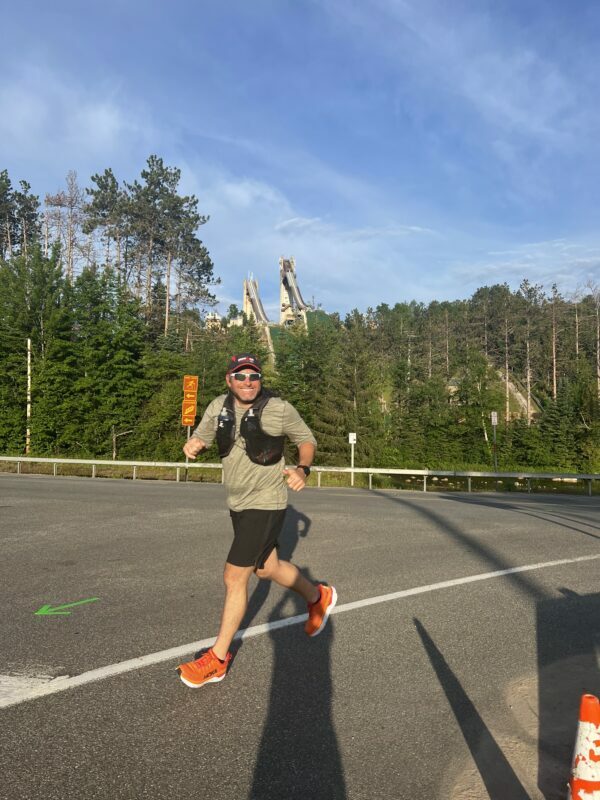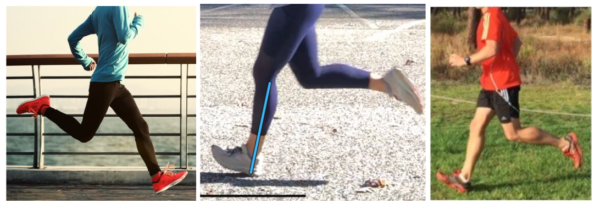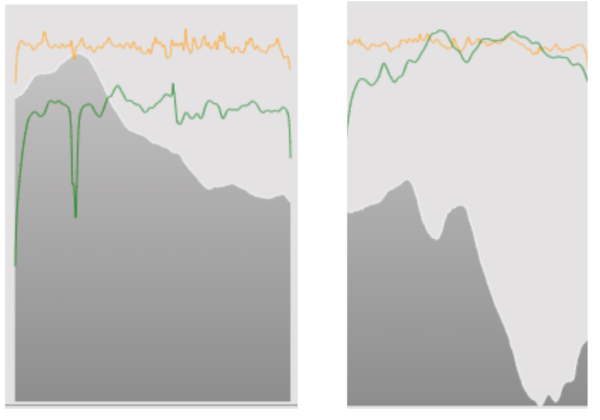An overview of the gait cycle and 3 common form issues
As an endurance athlete, you’ve likely been asked: “Why do you run?” Our friends and family are so curious about why we put so much time and energy into our training. A less-often asked question is: “How do you run?” In this post, I’ll review the basics of run form and provide some drills and strength work to help keep your run form in top shape.

The gait cycle
To answer the basic question of how we run, let’s start with the gait cycle. There are two primary segments: the stance phase and the swing phase.
The stance phase includes the portion of the gait cycle when our foot is on the ground. Upon initial contact, we want our foot to land within the body’s center of gravity. This will usually result in a midfoot or full foot landing (perhaps forefoot for faster speeds and some athletes). However, where on the foot we land isn’t as important as where we land relative to our center of gravity. When our foot lands further in front of the body, we refer to this as overstriding (more on that in the next section).
After the initial contact, the body engages in a series of actions to control the landing and absorb the ground forces. Ideally, much of this initial contact is absorbed by the foot and achilles. Our bodies also store elastic energy to support propulsion at the end of the stance phase.
Once the leg is directly under the hips, we are at a point of maximum load, and the body uses the stored energy move to propulsion. The leg extends behind us and the foot is a key part for our forward propulsion (just as it is a key player in absorbing the initial contact). I could write an entire article about the importance of foot mechanics! For now, I recommend that you click here to watch a video that reviews the foot’s role in propulsion through the windlass mechanism.
After we toe off, we enter the swing phase, when both legs are off the ground – and we are flying. AAAH! Freedom! How far we fly is a result of propulsion and the overall intensity we run.
That answers some of the basics of how. Now, let’s move on to 3 of the most common run form issues and explore options to work on them.
Adapting Form
It is a tricky endeavor to adapt form because some changes are not worth the risk. Changes in form will recruit different muscles and tendons, and if we make changes too abruptly, we can create injury.
That being said, some gradual changes in either form or strength may be necessary for our long term running health. So, if we make adjustments to form, the primary focus should be on preventing future injury or limiting muscular imbalances.
The most common run form issues that I’ve seen in video analysis include overstriding, hip drop, and knee valgus.
Overstriding
Overstriding occurs when the foot lands too far in front of the body. The images below show what this looks like, with a few variations in how extreme the overstriding presents.

In each of these cases, you’ll notice that overstriding is characterized by a relatively straight leg and heel strike upon contact. This landing results in a greater deceleration than typically happens, which often means more ground contact time. This poses a performance issue.
However, more importantly, this landing increases injury risk. The foot and the achilles cannot properly absorb those initial ground forces, which pushes the impact further up the chain to our shins, knees and hips. Those body parts are not designed to withstand the initial impact.
Usually (but not always), low cadence can be a symptom of overstriding. If the only way you can increase cadence is by running faster, then this may be a sign that you are overstriding. Ideally, our cadence remains fairly stable, with maybe a 2-4 spm difference in cadence at varying paces. To account for different paces, stride length grows or shortens based on propulsion.
The faster we run, the further we go during the swing phase as we propel through the air. But no matter what speed we are going, we want to ensure the front leg lands within our center of gravity upon initial contact.
The image below shows this difference. Both of these runners are at *about* the same phase in their running, but you can see Crowie (in the front) is clearly going to land within his center of gravity. You can also see how his back leg is straighter, and much of the propulsive force is behind him. Both men are clearly running fast, but Crowie is getting the better return for his energy investment.
In the images below, the yellow line is cadence and the green line is pace. The gray shaded portion is elevation changes. You can see that the green line varies as this runner shifts from a warm up into the first of several tempo intervals.

In the first image, the average pace is 9:43/mile with an average cadence of 192 spm, and stride length between 2.8-3.0 feet.
The second image shows this same runner beginning a tempo interval with an average pace of 8:05/mile with an average cadence 196 spm. Cadence also stays relatively stable despite the terrain changes. Stride length comes in between 3.5-3.6 feet.
The variation in stride length between the two paces allows this runner to continue to land within their center of gravity while maintaining a rhythmic cadence.
Making abrupt changes to cadence and stride length comes with risks, so any adaptations should be undertaken gradually. It is important to remember that the specific number for your cadence is not as important as where the foot is landing. So, don’t get hung up on 180 spm, which is often touted as “ideal.” Rather, we like to see athletes hitting at least 165 spm. The taller you are, the likely the lower cadence you will have.
Gradually introduce drills as part of your pre-run dynamic warm up. A few of my favorite drills for working on these elements include:
- Ankling
- Ankle Springs (starts 1:41 into video – but entire video is worth watching!)
- Quick Foot Drills (starts 4:50 into the video)
- Wall sprints
Hip Drop & Knee Valgus
Hip drop occurs when the non-weight bearing hip drops lower than the standing leg. See the image.
The dropped hip usually occurs because the hip, glute and/or abdominal muscles on the standing side are either not strong enough, or not firing correctly – or both.
Knee valgus occurs when the knees track inward when they are under load, such as during the stance phase in running or during strength movements such as squats or lunges. This is sometimes referred to as “knock knee”. Valgus may occur with one or both knees, at varying levels of severity. See the image below.
Addressing hip drop and valgus is best achieved through specific strength and mobility work that targets weaknesses in the glutes, or inhibited brain-body connection in the glutes, hip flexors and other stabilizing muscles.
Diagnosing Form
It is not possible in the course of a single article to outline all of the various form issues, but here we’ve covered the 3 we see the most.
Through a mix of targeted strength and mobility work, as well as some key drills, you can make improvements to your run form that will allow you to run faster with less effort.
We can help with your run form questions, with our video analysis service. For more information on how this works, please contact us!
